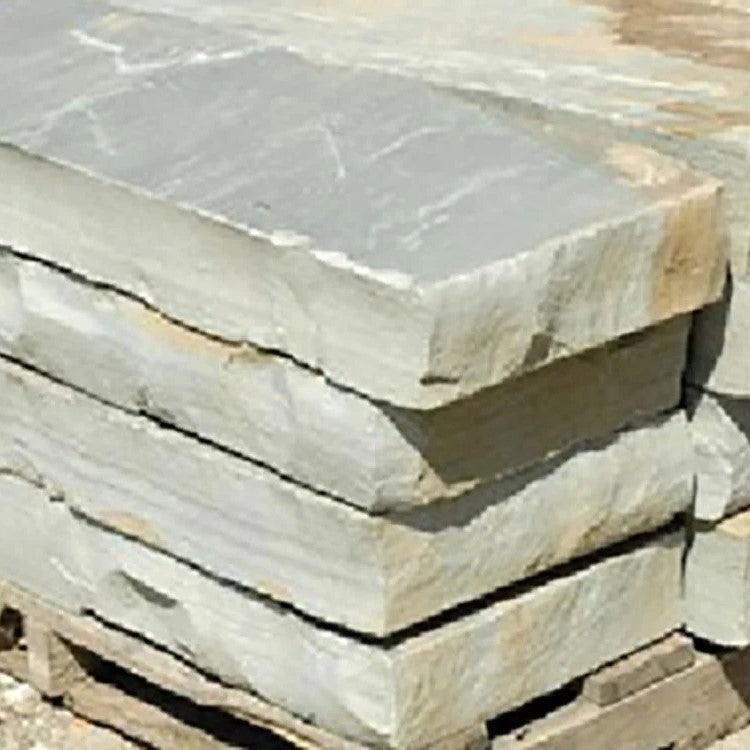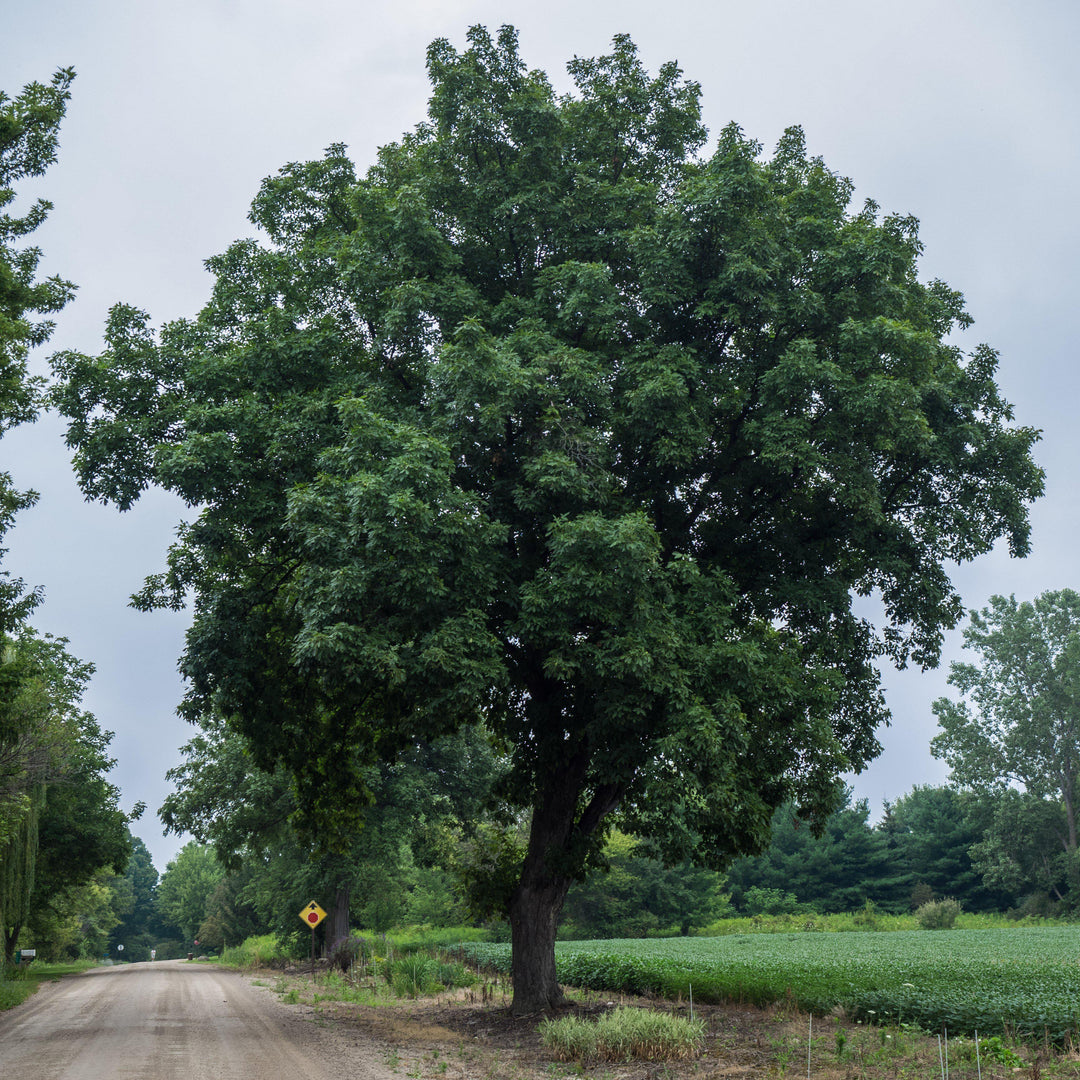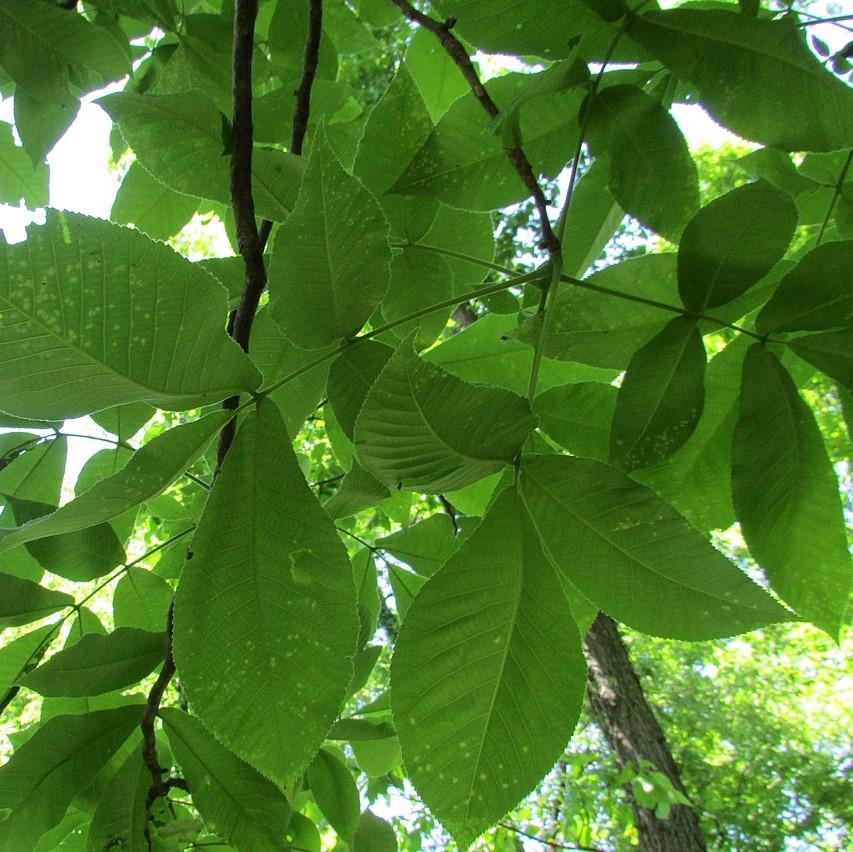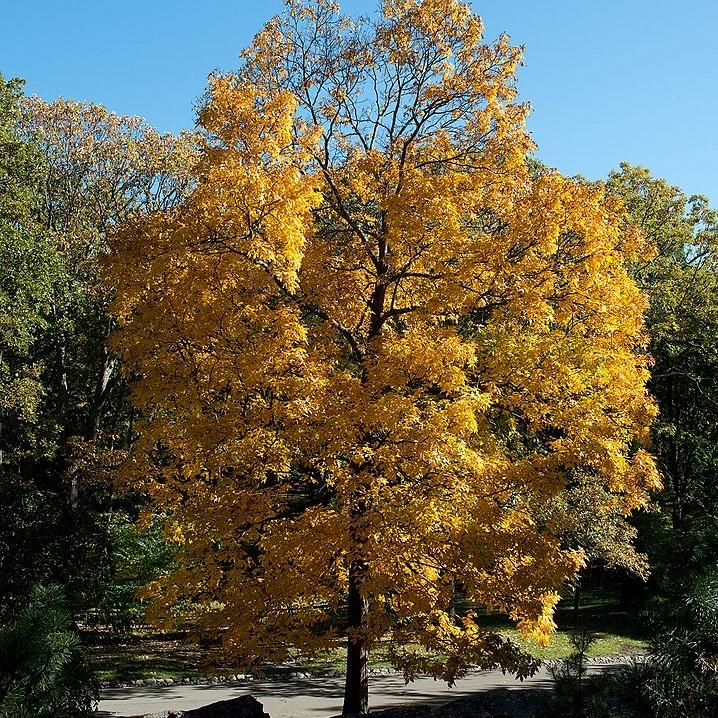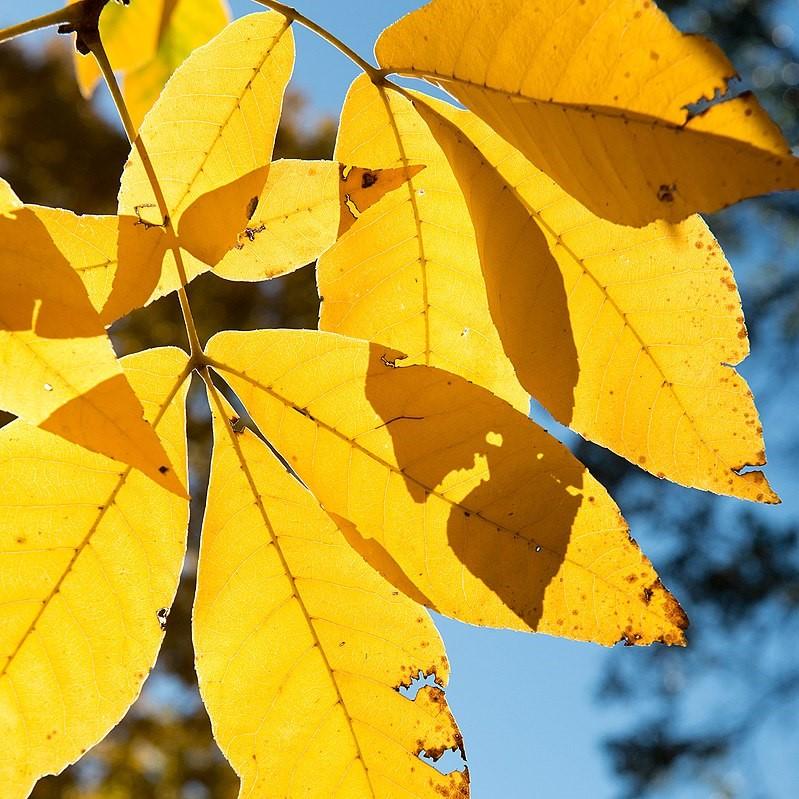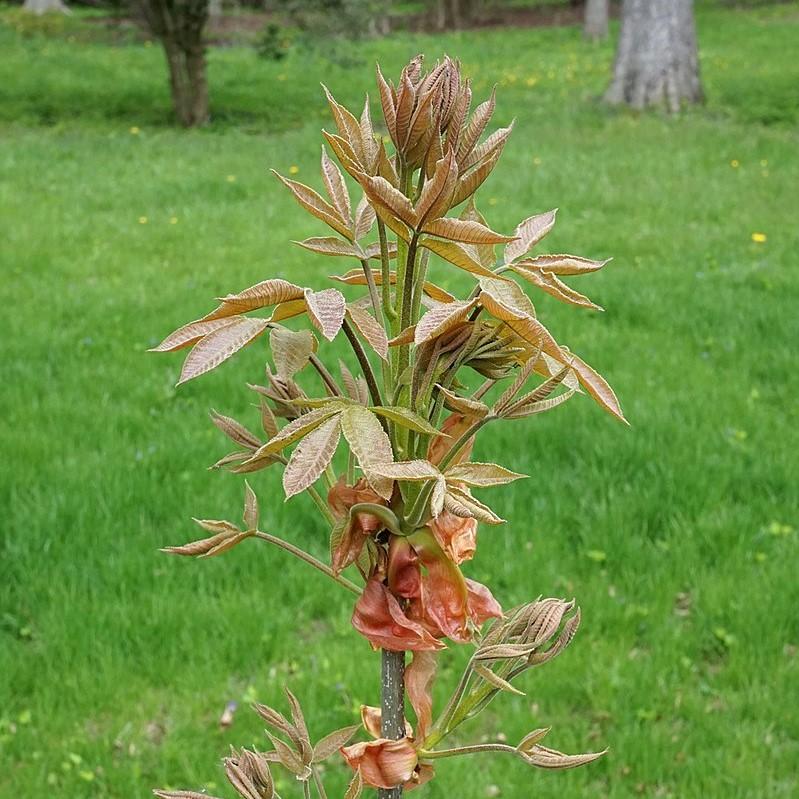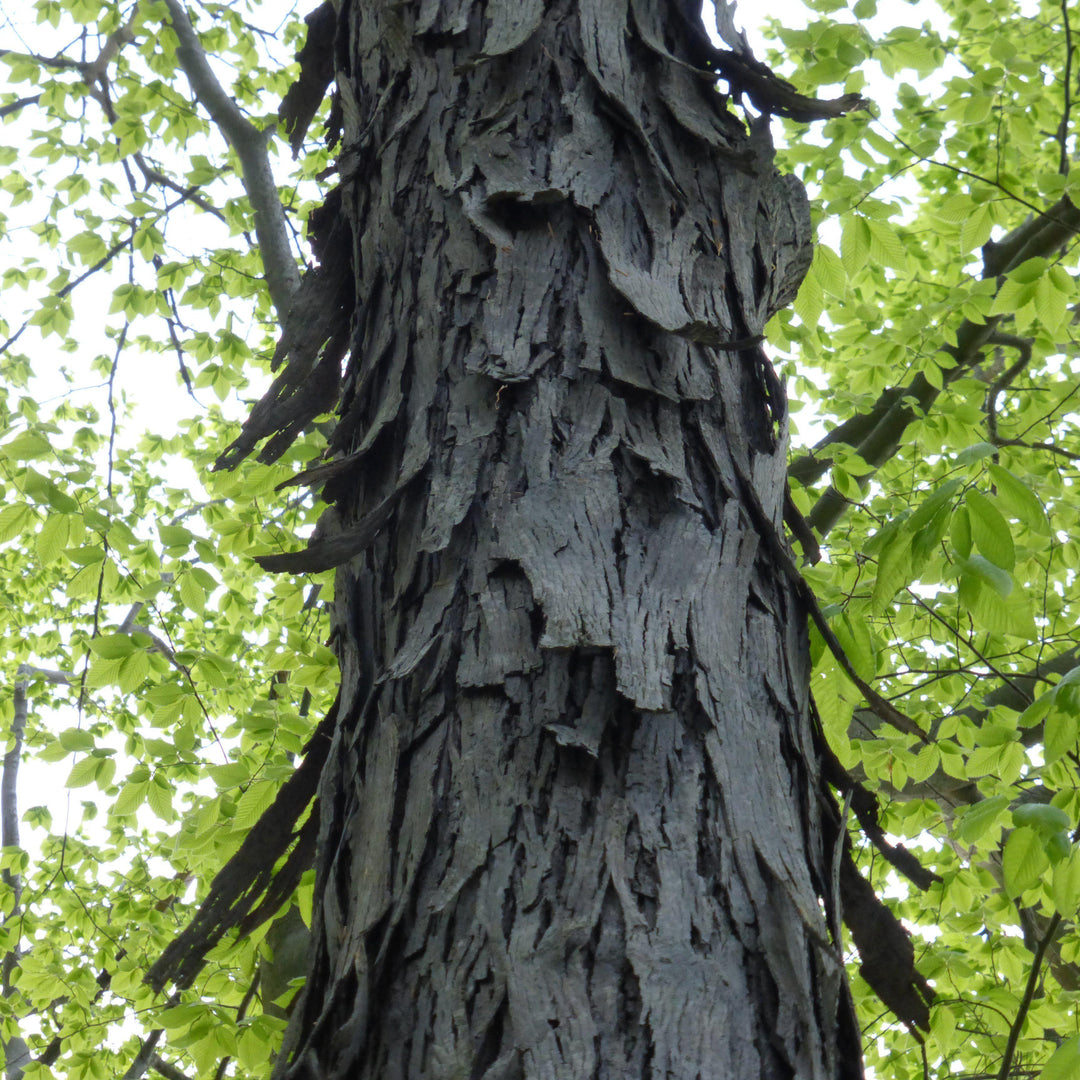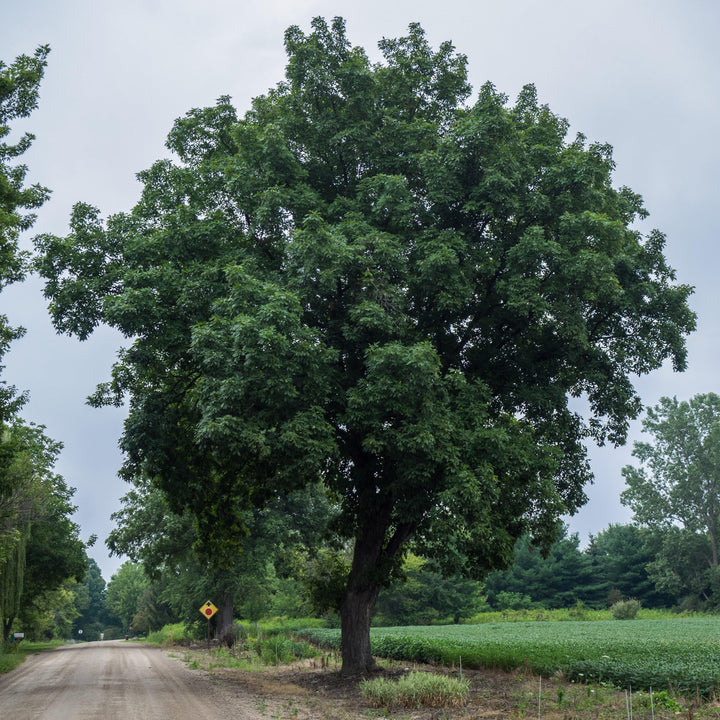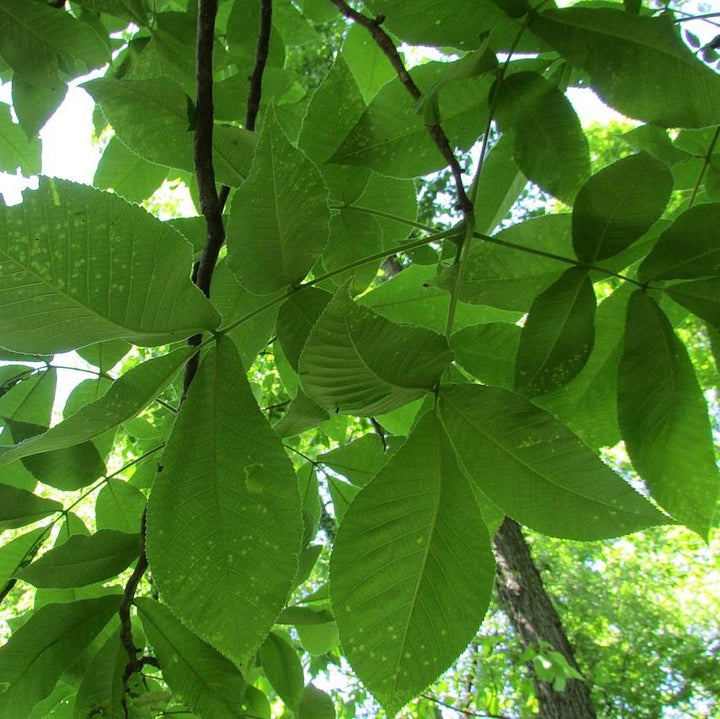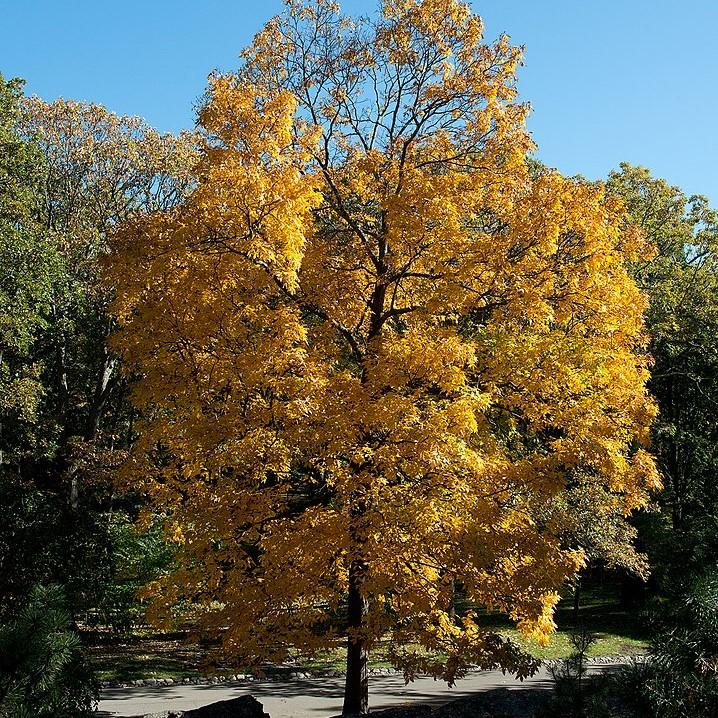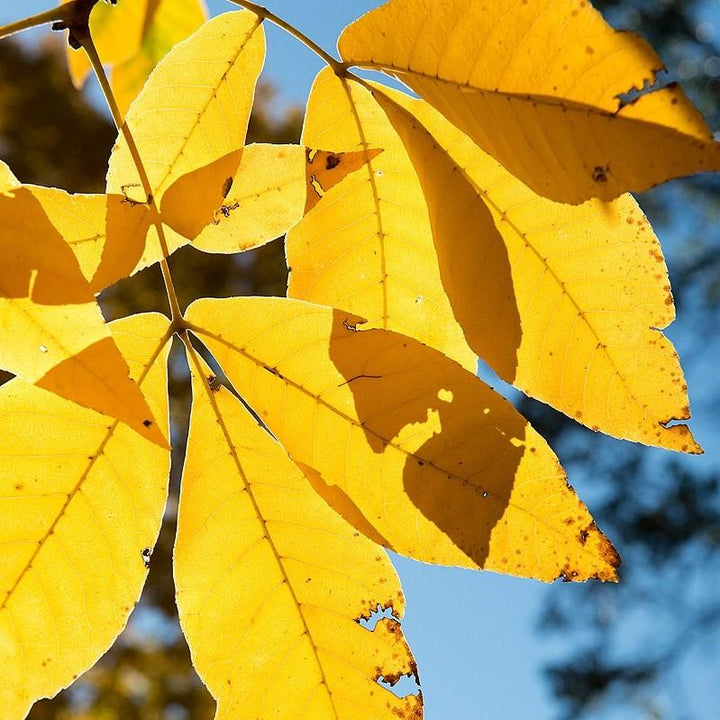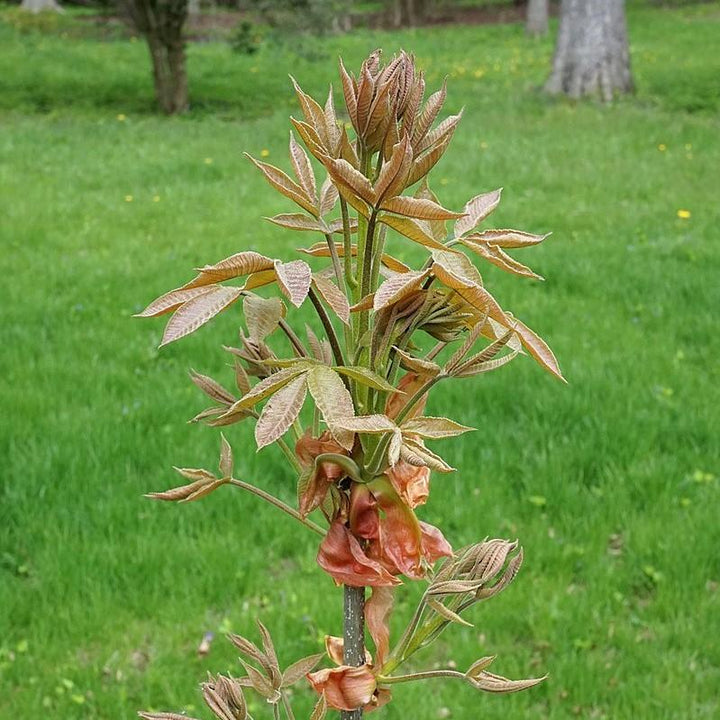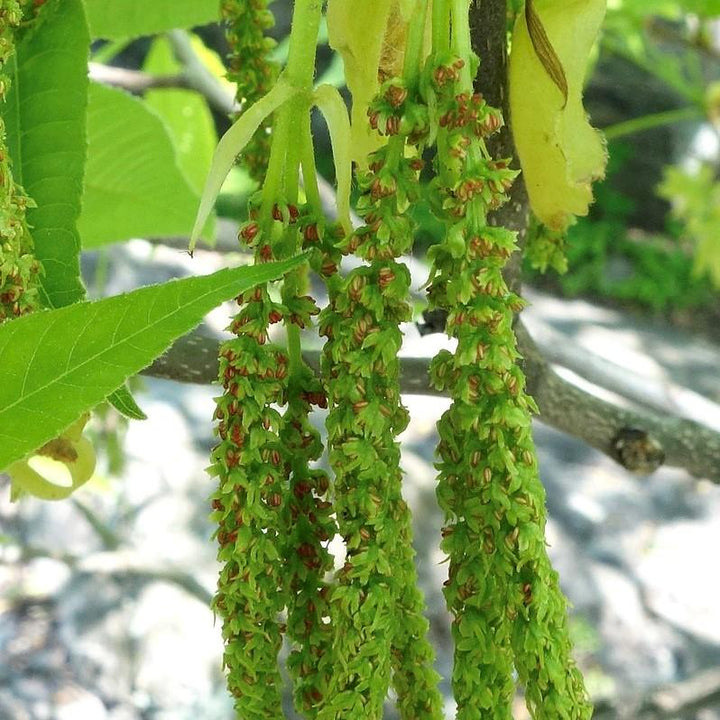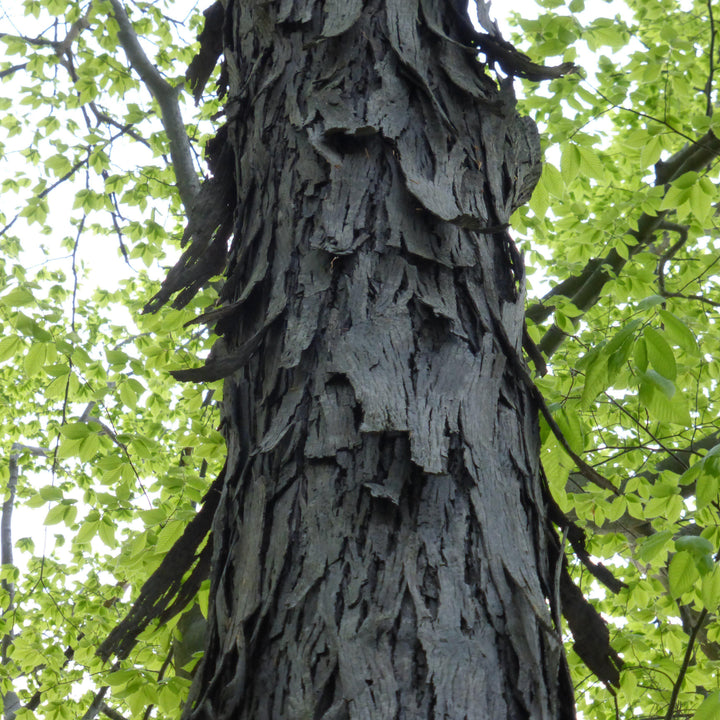Shagbark Hickory is a large native deciduous tree with an irregular oval-rounded crown and distinct exfoliating bark that develops sheets that curve away from the trunk. The medium green compound leaves turn yellow and golden-brown in fall. Non-showy gendered spring catkins can give way to husked nuts, but may take up to 40 yrs to start producing. Grows best in full sun and rich, moist well-drained soils.
Carya ovata is a host plant for several butterfly and moth species, including the Banded Hairstreak, Luna Moth, and the Hickory Horned Devil.
|
Type: |
|
|
Origins: |
Eastern N. America; GA Native |
|
Height: |
70’ - 90’ |
|
Spread: |
50’ - 70’ |
|
Spacing: |
60’ |
|
USDA Hardiness Zone: |
4 - 8 |
|
Culture: |
|
|
Bloom Color: |
Green |
|
Season of Interest: |
MAINTENANCE NEEDS: Low maintenance. Difficult to transplant due to taproot. Large trees can produce considerable litter with twigs, leaves, and nuts. No serious disease or pests. Hickory bark beetle, pecan weevil, borers and twig girdler can be problems in some areas. White heart rot, anthracnose, leaf blotch, powdery mildew, leaf spot, cankers, catkin blight, crown gall and scab are occasional diseases.
LANDSCAPE USES: Specimen planting or mass plantings, Woodland Garden, Naturalized Areas, Native Garden, and Shade Tree.
COMPANION PLANTS: Yellow Birch, Oakleaf Hydrangea, Bottlebrush Buckeye
IMAGES: Photo by F. D. Richards, Carya ovata, 2015 L3, (2) Chris Light, Hickory 20-05-31 031, CC BY-SA 4.0, (3) Plant Image Library from Boston, USA, Carya ovata (Shagbark Hickory) (26470327339), CC BY-SA 2.0, (4) Plant Image Library from Boston, USA, Carya ovata (Shagbark Hickory) (26470329009), CC BY-SA 2.0, (5) Plant Image Library from Boston, USA, Carya ovata (Shagbark Hickory) (34439472552), CC BY-SA 2.0, (6) William (Ned) Friedman, Carya ovata male flowers, CC BY-SA 4.0, (7) Photo by Kevin Faccenda, carya ovata
*As plants have ranges in appearance they may not appear as the images shown.




















